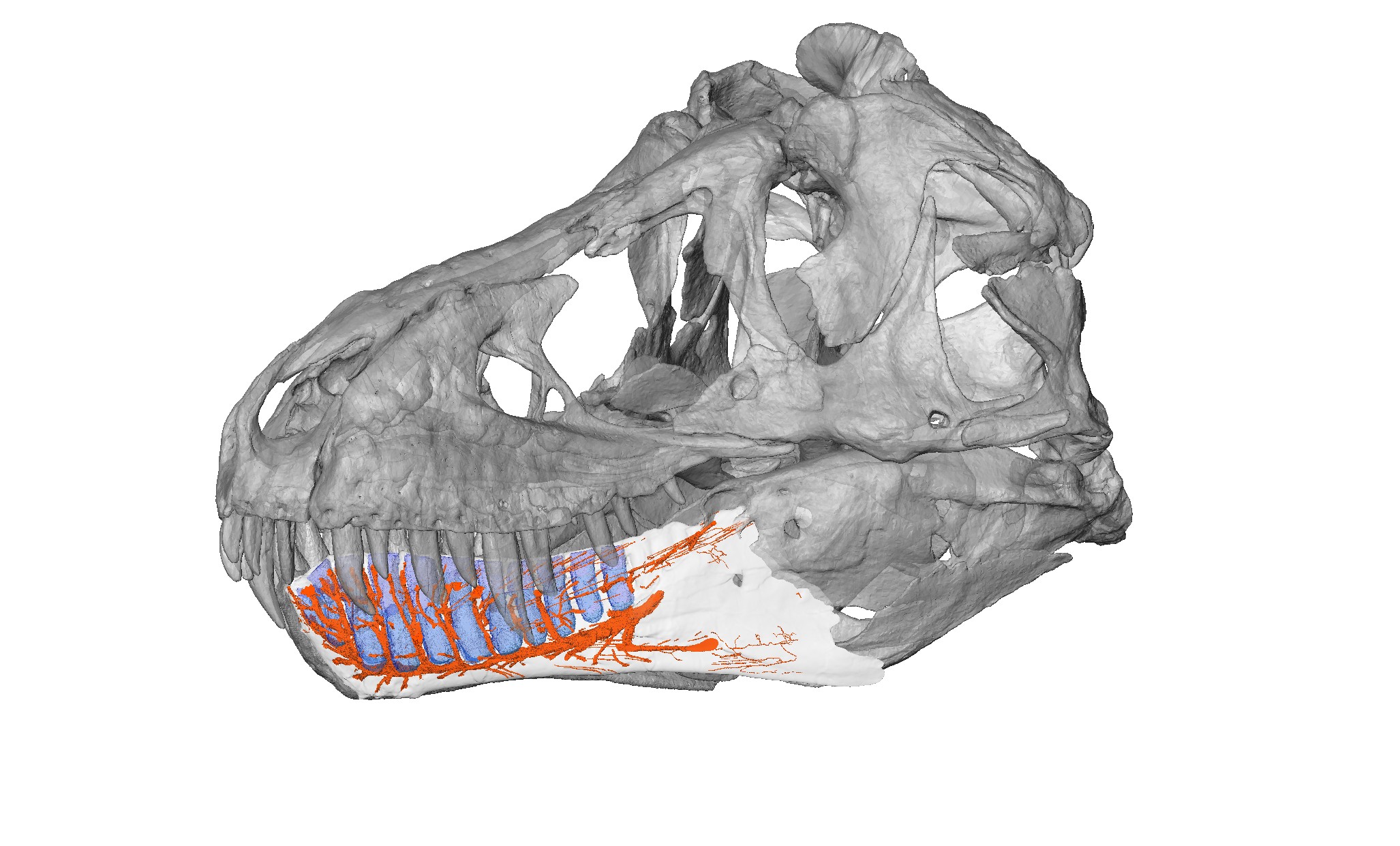T. Rex Was a ‘Foodie,’ Scientists Find
August 27, 2021The oh-so-fearsome Tyrannosaurus rex—king of the tyrant lizards—was actually a foodie, a new study suggests.
Sure, the dinosaur may have had 60 eight-inch-long teeth that tore up flesh like we would a T-bone steak, but new research shows that the mighty predator wasn’t as indiscriminate, or as savage, an eater as stereotypically perceived.
Through CT scans of the T. rex’s lower jaw, paleontologists at the Institute of Dinosaur Research at Fukui Prefectural University were able to reconstruct the fossil’s canal structure. They found that the dinosaur actually had vast and sensitive nerve endings in its mouth, allowing it to pick through its food with greater care.
According to Soichiro Kawabe, one of the paper’s authors, the T. rex had “a delicate side like other animals. It’s not a monster” he told VICE World News. “You could say it was a foodie.”
The paper compares the T. rex’s sensitive eating habits to alligators’. Research found that the dinosaur fossil’s holes, where blood vessels and nerves passed through, were nearly identical to those of its reptilian cousins.
Kawabe predicted that when eating, the T. rex likely held down its prey with its legs (the T. rex’s tiny arms can’t reach that far down), pulling the juicy and nutritious meat off the bone like humans would a chicken leg. “But when needed, it probably also ate the bones too. Marrow is very healthy,” Kawabe said.

Steve Brusatte, a paleontologist and professor at University of Edinburgh who is not associated with the paper, said he was impressed with the study.
It showed the T. rex “had brawn, of course, but also finesse,” he told VICE World News.
“As if T. rex wasn’t frightening enough, with a body the size of a bus and a bite that could crush a car, it turns out that its jaws were highly sensitive, so it could carefully choose and manipulate its prey,” he said in an email.
In addition to the dinosaur’s sophisticated palate, Kawabe and his colleague also found that the T. rex had a sensitive snout that helped it parent and make nests.
Like the crocodile, Kawabe said the T. rex had great control over its jaw and nose. “This means that the dinosaur could have similarly carried its children in its mouth carefully,” he said.
Lisa Buckley, an independent paleontologist who is not affiliated with the study, said comparing present-day animals to extinct dinosaurs can help us better understand what they were capable of. “They are our living laboratory to test out ideas we have about how dinosaurs used their anatomy to live their lives,” she told VICE World News.
“I probably wouldn’t be brave enough to boop the snout of a living tyrannosaur, but they would definitely be able to feel it,” she said.
The T. rex as a picky eater isn’t an entirely new notion.
Kawabe said some paleontologists suspected about 10 years ago the dinosaur may have been more selective eaters. Previous research looked at tooth drags and bone puncture marks on T. rex’s prey to understand its eating patterns and whether the predator could have been a scavenger.
Bite marks on smaller herbivorous dinosaurs, which would have been the T. rex’s prey, indicated that they chose specific parts to eat, he said.
Kawabe said his research sheds light on the biological features that enable the dinosaur to be a picky eater. He is planning to expand his research to how other dinosaurs’ nerve endings worked and how their jaws developed.
Bone appetite.
